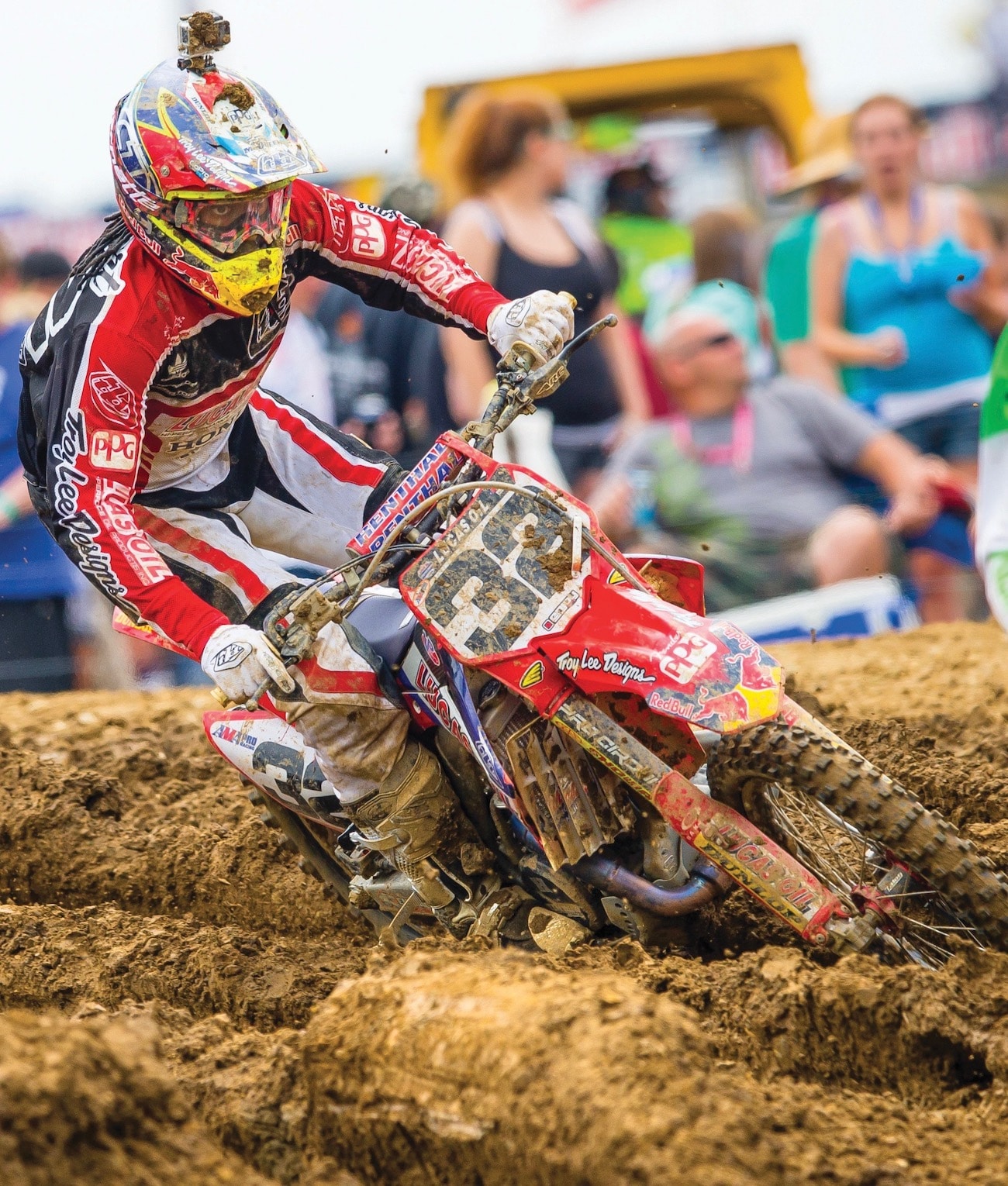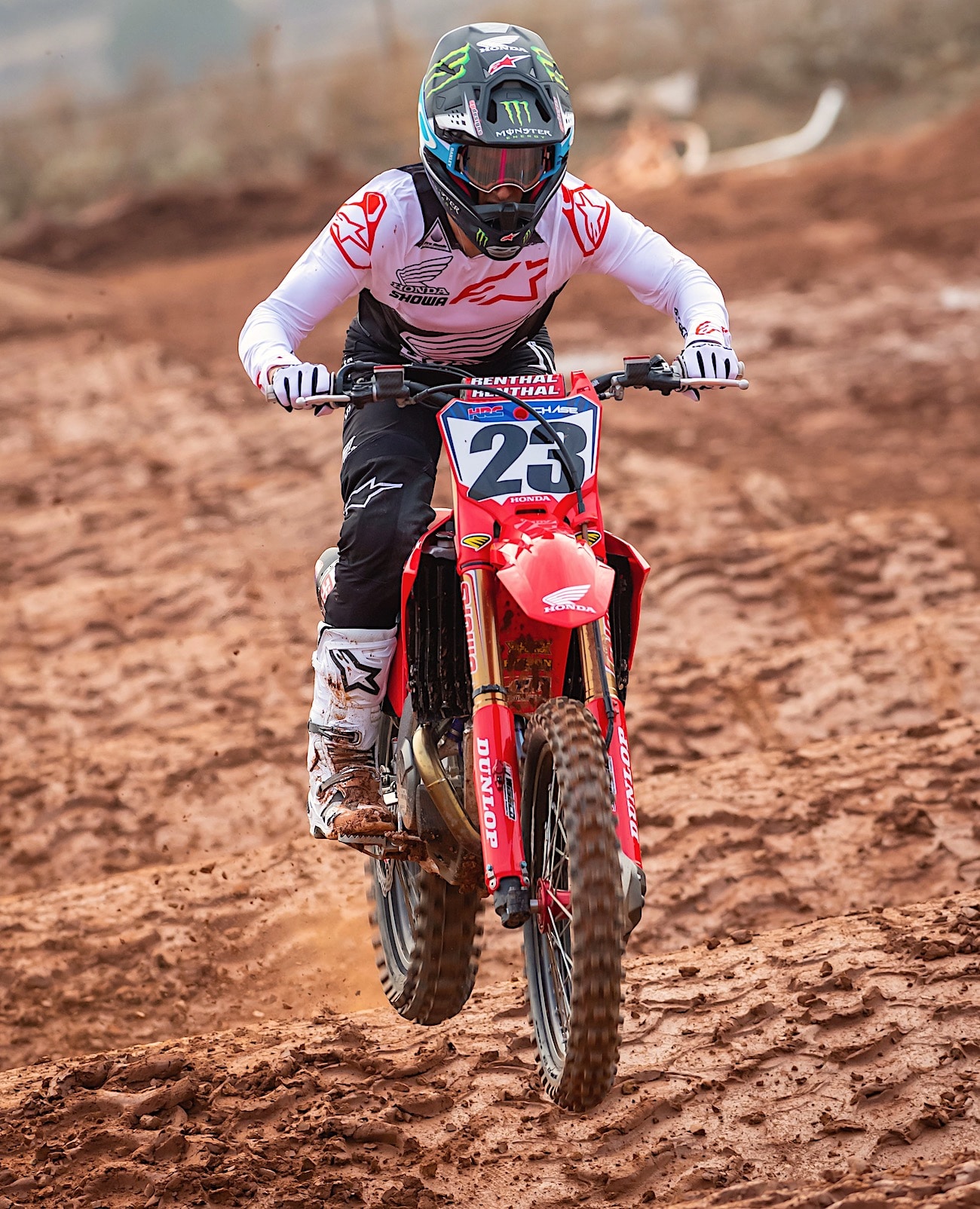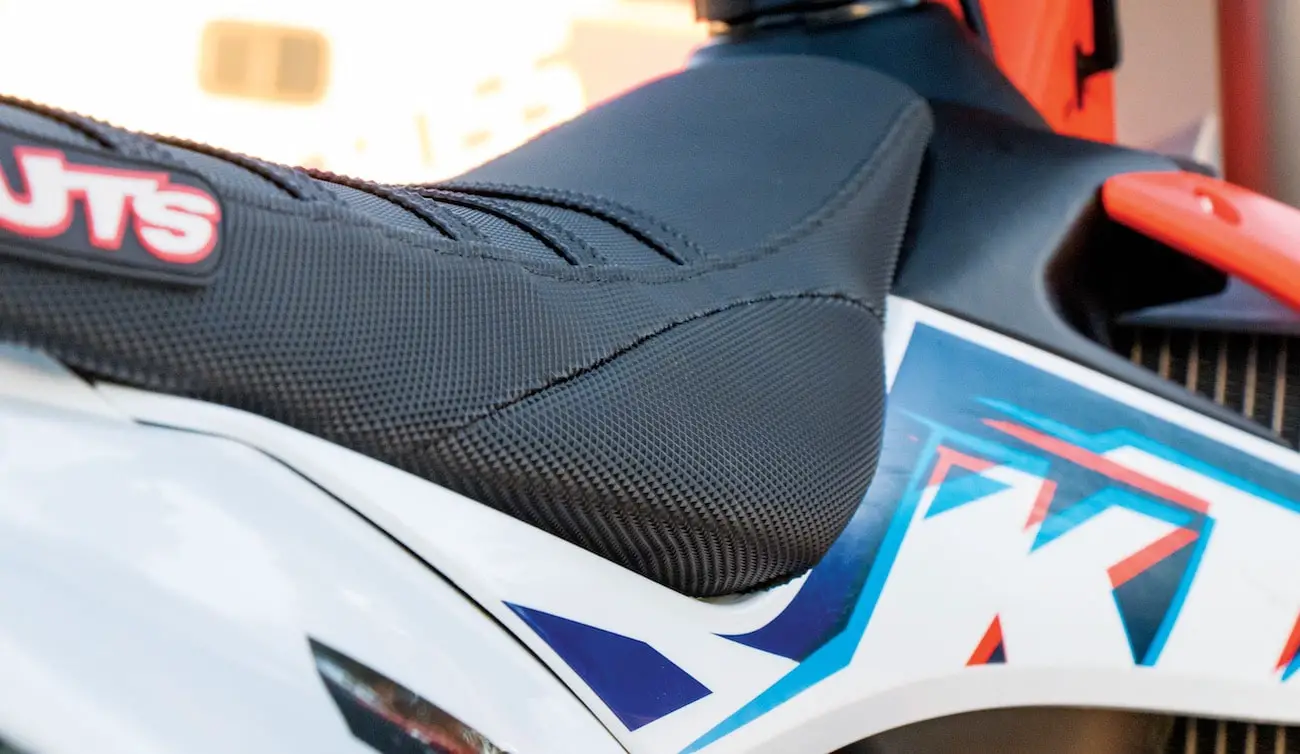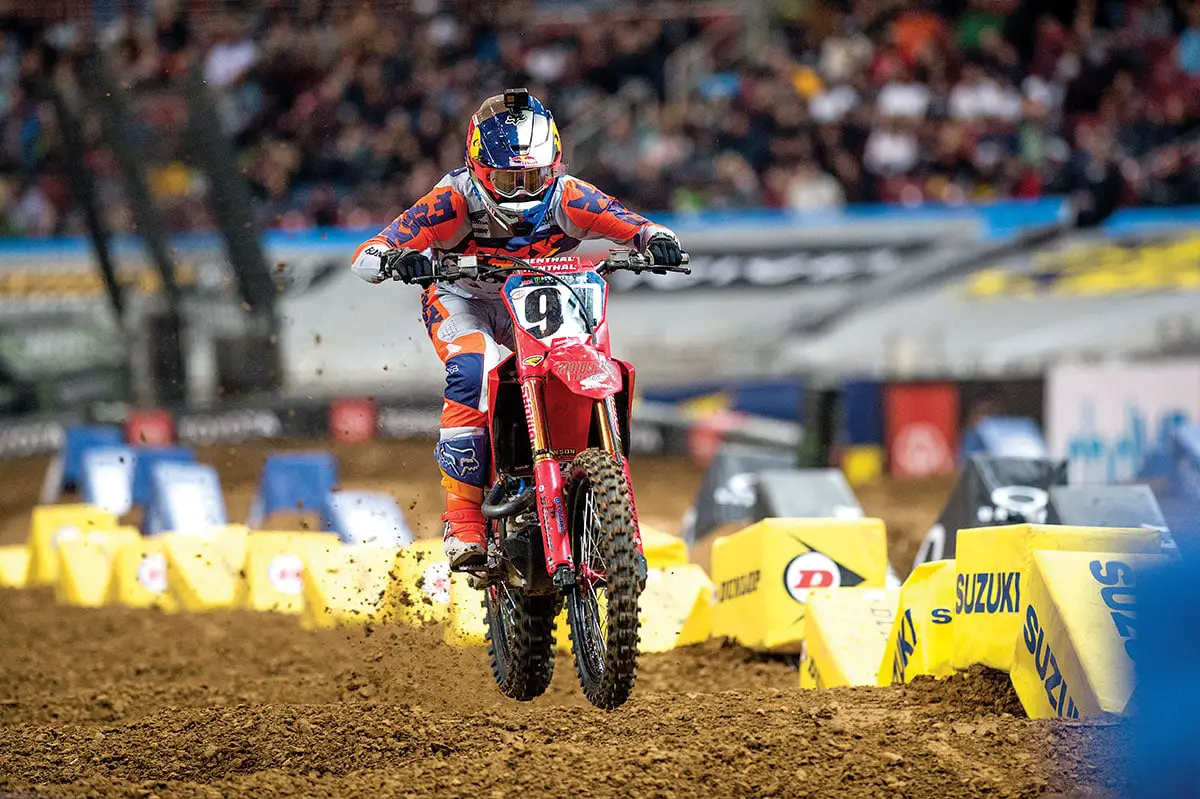TEN THINGS YOU NEED TO KNOW ABOUT GRIPPING YOUR BIKE

TEN THINGS YOU NEED TO KNOW ABOUT GRIPPING YOUR DIRT BIKE
(1) Why grip? Fundamentally, riding a motorcycle requires a certain amount of grip to stay on the bike. But, most people don’t know that they can ride faster and smoother by intentionally gripping the bike harder and more efficiently. When you’re tired and you naturally loosen the grip of your legs, the force of acceleration pulls your body backwards, forcing you to compensate with your arms to pull yourself back into the correct position. If you grip the bike with your legs more, you will stay centered on the motorcycle, save energy and go faster. It takes more discipline to do it the right way, but it allows you to ride longer, faster and safer.
(2) How to grip? It’s all about using the right amount of energy at the right time. Your legs are the strongest part of your body, and they should always be used as the primary force while gripping the bike. Gripping with your knees, calves and feet helps relieve pressure in your arms and prevent arm pump. Fatigue and arm pump happen to every rider from time to time, but it happens much more often to riders who hold on too tight with their hands and not tight enough with their legs.
 To get your legs to grip the bike better, turn your toes inward as Chase Sexton is doing in the whoops.
To get your legs to grip the bike better, turn your toes inward as Chase Sexton is doing in the whoops.
(3) Technique. The proper technique will enable you to grip the bike easier, because it will be more natural to squeeze. The trick is to point your toes inward towards the engine. This will automatically force your legs to move closer together. Try it by standing with your feet 20 inches apart and then turning your toes inward. Your legs will go with your toes. On steep, fast downhills, gripping the tank with your knees allows you to loosen your grip on the bars.
(4) Grip tape. Many riders put grip tape on their frames and side plates to help achieve a better grip on the bike. It’s smart to experiment with which grip tape works best for you. Some aftermarket brands produce plastic frame guards with rubber grip on them as well. Similar to grip tape, Steg Pegz created a rubber hockey-puck style gripping accessory that attaches to your bike’s side panels. The rubber puck sticks out and helps hold your legs in place to create a better grip. Some MXA test riders love Steg Pegz, as they keep weight off the arms.
 Steg Pegz bolt to your bikes side panels and allyou legs to rest against them.
Steg Pegz bolt to your bikes side panels and allyou legs to rest against them.
(5) Gripper seats. Aftermarket gripper seats are a must-have for anyone looking for optimum performance. A slippery, non-gripper seat makes it much harder to hold a good position on the bike, which noticeably increases arm pump. A gripper seat will help keep you in position and save energy. Some riders, most notably Ryan Villopoto, add a foam bump underneath their seat cover to accomplish the same task. Guts Racing created a winged seat cover that bulges out on the sides to add more surface area to increase grip.
 The Guts Racing RJ Wing Seat has 1-inch of foam on each side of the seat cover, providing additional grip. Click here for more info on this seat.
The Guts Racing RJ Wing Seat has 1-inch of foam on each side of the seat cover, providing additional grip. Click here for more info on this seat.
(6) Footpegs. Sharper foot pegs help immensely when it comes to keeping your feet in position so that you can grip effectively. They also help you to stay planted when pushing weight through the pegs and to put traction to the ground.
(7) Feet on. James Stewart, Ken Roczen and Eli Tomac have been the modern Pied Pipers of riding with their feet on the pegs all the way around the corners. They only do this in select corners to save energy and keep a consistent grip on the bike, but it makes a difference when they do, especially when coming out of a berm and into a Supercross whoop section, because their feet are already in position to attack whoops. For average riders, keeping their feet on the pegs helps save energy and keep a consistent grip on the bike.

(8) Training. Learning to grip harder will make you more tired initially, but as you get stronger, it will become easier to squeeze the bike. Plus, as you get faster, squeezing will become more essential to help your technique evolve with your speed.
(9) Silicone spray. Spraying your bike with silicone spray is beneficial for protecting your plastics, keeping mud off your bike and for making it look good, but it is not good for grip. If you use silicone spray on your shrouds and frame, be sure to wipe it off with a wet towel (we use contact cleaner) before you go riding.

(10) Drills. Try to complete a lap at your normal pace while standing up all the way around the track. For the next lap, sit and stand while keeping your feet on the pegs all the way around the track, even in the corners. And last, practice fast-feet drills where you keep your feet on the pegs as much as you can. But, when you do decide to put your leg out, bring it back to the footpeg as quickly as possible. Intentionally setting aside time to practice these drills will help you learn how to grip your bike more effectively.




Comments are closed.